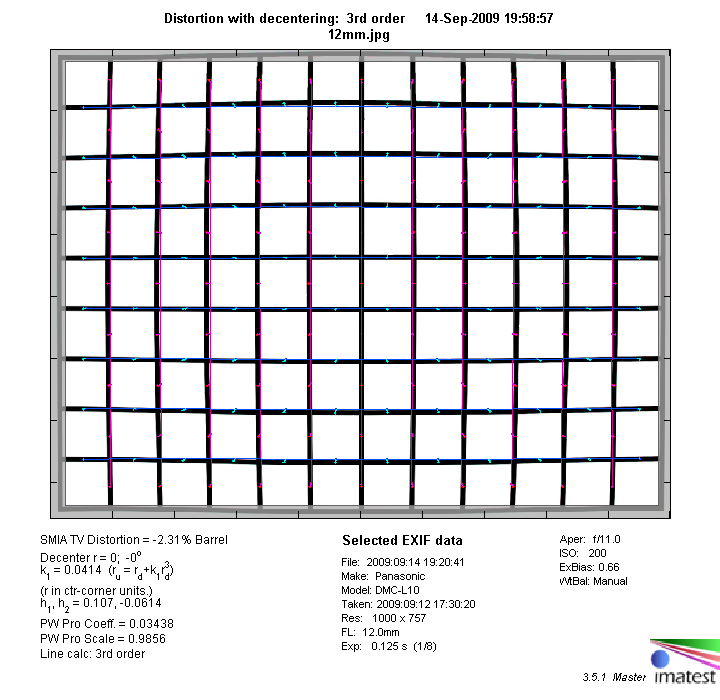|
Olympus Zuiko Digital 12-60mm f/2.8-4 ED SWD Review / Test Report - Analysis |
|
Lens Reviews -
(Micro-)Four-Thirds
|
|
Page 2 of 3

Distortion
The distortion characteristic of the Zuiko is pretty good for a lens in this class. At the most critical setting (12mm) it produces only a medium degree (2.31%) of barrel distortion (mustache style though). At 18mm there's virtually no distortion and beyond there're only minor pincushion distortion.
|
Move the mouse cursor over the focal length text marks below to observe the respective distortion
|
| 12mm |
18mm |
35mm |
60mm |

|
Vignetting
Vignetting is also comparatively well controlled. It is, as usual, most pronounced at 12mm @ f/2.8 with a fairly strong edge shading of ~0.9EV - this can be visible at times. At all other setting is problem is much reduced and usually not field relevant.

MTF (resolution)
The resolution characteristic of the Olympus 12-60mm is very impressive. At large aperture settings the center performance is excellent throughout the range. The border and performance is generally very good. Same goes for the corner performance at the wide end (we didn't test this for the tele range). On a global basis there's slight drop in quality at 60mm but the lens remains perfectly usable here even at max. aperture. Some may wonder about the comparatively "early" performance peak (in terms of f-stop) - this is no flaw of the lens but it originates in the diffraction characteristic of the four-thirds format which has its sweet spot in the f/2.8 to f/5.6 range. Aperture setting beyond f/8 should be generally skipped in order to avoid image softness. The field curvature is only minimal.
Please note that the MTF results are not directly comparable across the different systems!
Below is a simplified summary of the formal findings. The chart shows line widths per picture height (LW/PH) which can be taken as a measure for sharpness.
If you want to know more about the MTF50 figures you may check out the corresponding Imatest Explanations
Chromatic Aberrations (CAs)
Lateral chromatic aberrations are quite well controlled with an average CA width of ~1.3px or less at the image borders. The problem is most pronounced at 12mm. It's a non-issue in the middle range and a bit more pronounced again at 60mm.

|